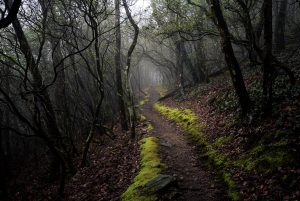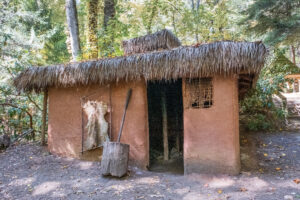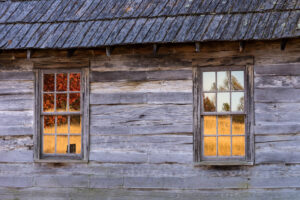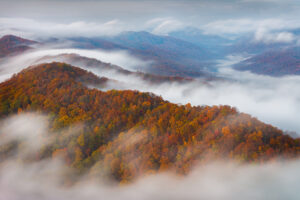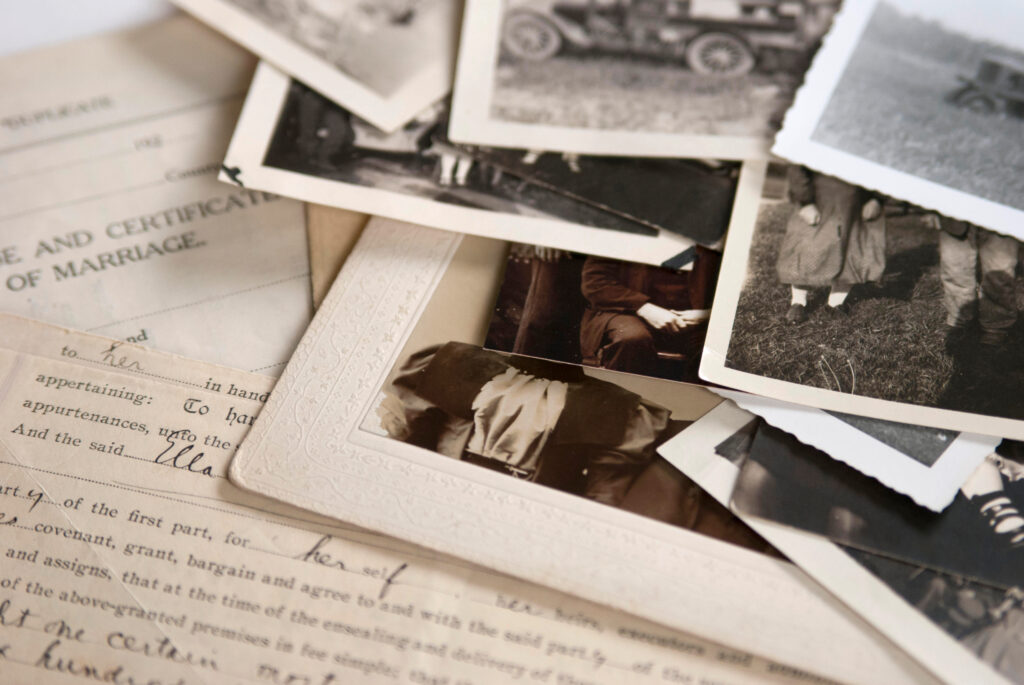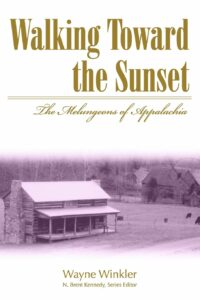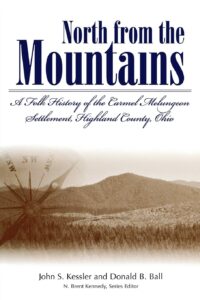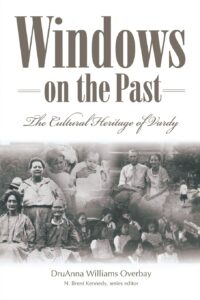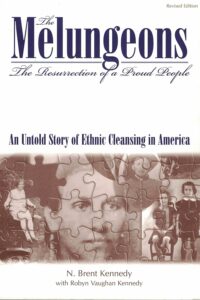Melungeons were a mixed-ethnic group who lived in regions of Appalachia, with European, African, and Indigenous ancestry, as well as other admixtures. They were considered an isolated and mysterious culture.
Who were the Melungeons?
The word “Melungin” was first recorded in the minutes of the Stony Creek Baptist Church in 1813 in Scott County, Virginia. The term was most likely used to describe people of mixed heritage long before it was written down. Most scholars agree that the word Melungeon originated from the French word mélange, simply meaning “mixed”. There are several other theories on the origin and meaning of the word Melungeon, depending on your source.
Melungeons were referred to by scholars as a “tri-racial isolate,” which was a mixture of European, African, and Indigenous people, but there are also Middle Eastern, Jewish, Southeast Asian, and Latin American/Caribbean connections as well. Originally, the word Melungeon was used as a derogatory term towards people of mixed heritage, primarily those living in isolated regions of Appalachia. Melungeon descendants have since reclaimed the term, proudly embracing this label as a descriptor of their ancestry.
While Melungeons are often associated with Free Persons of Color, some of us also carry the blood of multiple Indigenous tribes, and/or enslaved Africans and European indentured servants, as well as that of other persecuted groups such as the Scots-Irish, Jews, Roma, and Acadians. For this reason, rediscovering our true history often requires a fair amount of processing and healing.
"To heal is to offer a profound act of service – one which will ripple up and down your family lineage, out into your community, and the world beyond you."
Lucy H. Pearce, Medicine Woman
Embracing Melungeon identity provides a way for the mixed-ethnic peoples of Appalachia to embrace and celebrate our ancestry in a way that is respectful of those groups who are living the cultures of our ancestors today. We are not a tribe. This is not a trend.
Please note, no DNA test can prove you’re a Melungeon descendant. The only way to know for sure is if you can trace a branch of your family tree back to any of the documented “core Melungeons”, such as Mahala Mullins, Vardy Collins, “Old Ben” Collins, Buck Gibson, or Valentine Collins. Even then, these clues can serve as an additional confirmation of your Melungeon ancestry!
With that said, if you feel ready for the journey ahead, here are some clues to Melungeon heritage you might check for. None of these clues on their own will give you answers, but in combination with others, they could be a good indicator of your ancestry.
Primary Clues
Surname
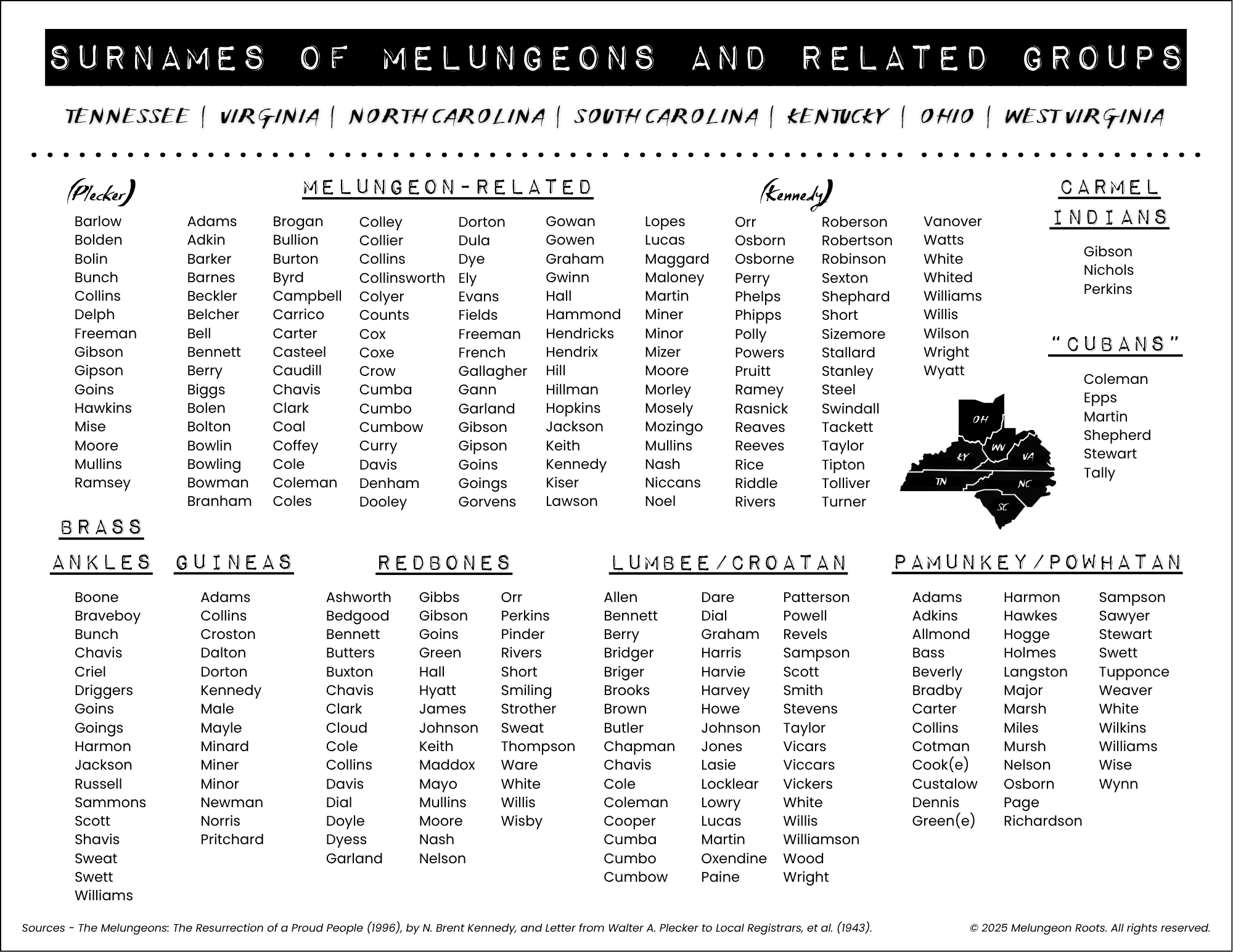
This image is being updated and is one page of a three-page surnames list pdf I'll soon be sharing with members. The document will contain additional information on each of the related groups, as well as a list of all sources used.
Many Melungeon surnames are of English, Scottish, or Irish origins. At least that seems to be the pattern. The most well-known surnames are Collins, Gibson, Mullins, and Goins. Some other common Melungeon surnames are Bennett, Nichols, Riddle, Colley, Fields, Campbell, Bell, Minor, and Cox. In 1937, Virginia state registrar of vital statistics, Dr. Walter Plecker, sent a letter to local registrars and others containing a list of surnames he claimed were mixed ancestry families attempting to pass as White. In the letter, he lists Collins, Gibson/Gipson, Moore, Goins, Ramsey, Delph, Bunch, Freeman, Mise, Barlow, Bolden/Bolin, Mullins, and Hawkins as Melungeons from Tennessee. The surnames on Plecker’s list became targets of the eugenics movement in Virginia and throughout the region.
A more complete list of Melungeon and related surnames can be viewed here. If you see one or even a handful of these surnames in your family tree, it might be just a coincidence, but if you can put a check next to quite a few on this list, you could be onto something! What’s really in a name, though? Not much when it comes to Melungeon research, unless you know where your ancestors lived…
Location
Historically, the Melungeons lived in the Cumberland Gap region of the Appalachian Mountains. This area includes Northeast Tennessee, Southwest Virginia, Western North Carolina, and Eastern Kentucky. They also lived in parts of Southern Ohio and West Virginia. “Melungeon” is sometimes used as a catchall for mixed-ancestry peoples, but this is an inaccurate use of the word. True Melungeons (those recorded as such) were a distinct group of people with a unique heritage.
Some of the counties where Melungeons were known to have lived:
- Hancock, Hawkins, Rhea and Claiborne in Tennessee
- Lee, Scott, Tazewell, and Wise in Virginia
- Wilkes, Ashe, Orange, and Surry in North Carolina
- Morgan, Floyd, and Magoffin in Kentucky
- Highland, Darke, and Morgan in Ohio
- Barbour and Taylor in West Virginia
When researching your family tree, if you notice more than a few Melungeon and related surnames, and these counties show up frequently, you may be a Melungeon descendant. There’s one more big clue, though, that may get you closer to the confirmation you’re looking for…
Ancestry
Records (Your Ancestors)
If your ancestor’s surname and locations match the above, you should check their census race for more clues. If you see that they were listed as a “Free Person of Color” (FPC), “Black” (B), “Mulatto” (M), or “Indian” (I), they could have been Melungeon, especially if their race was inconsistent and changed between years, often including “White”. Identifying these designations and patterns in core location census records for an ancestor is a valuable clue. A good example of this is Valentine Collins, a Melungeon, who was alternately listed as either “White” or a “Free Person of Color” throughout the years. Some Melungeon descendants, however, may not find clues here if their ancestors have been “White” for generations.
For more information on historical census race/ethnicity categories: Measuring Race and Ethnicity Across the Decades: 1790-2010
DNA Results (You/Family)

Many Melungeon descendants today are white-passing, yet can find evidence of mixed ancestry in their DNA. The screenshot above, of my 23andMe Ancestry Timeline, is a good example of this. Many of us, who are so far descended from our Melungeon ancestors, may have only trace amounts (1-2% or less) of African and Indigenous ancestry in our DNA results.* However, by using a variety of the available ancestry tools, we can gain more insight. Again, there isn’t a test that can tell you for sure if you’re Melungeon; It’s the specific admixture results you’ll see on reports that provide the most help in this area.
In addition to African and North American Indigenous ancestry, Melungeon descendants often report one or more of the following trace ancestry results as well: Turkish/Middle Eastern, Roma, Berber, Caribbean, Southeast Asian, Sephardic Jewish, and Central and South American Indigenous.
* DNA testing is a personal decision that should be carefully considered. Be sure to check that the testing company you choose values ethical sampling practices and customer privacy.
Other Clues
Oral History
If any of the elders of your family have mentioned or passed down stories of Native American ancestry, you may be of Melungeon or other mixed ancestry heritage. This story is a common one passed down in families from Appalachia, particularly in regions where Melungeons were known to have lived. There could be some truth to it! On its own, though, this clue is weak.
Brick Walls
Many Melungeon descendants experience brick walls in their genealogical research. Unfindable or disappearing ancestors are not uncommon. Cluster research (the FAN Principle) and other non-traditional research methods may be helpful to you if you’re experiencing this phenomenon. Frequent migrations, matrilineal naming, common-law marriages, children born out of wedlock, various name spellings (both due to errors and intentional), and/or other poor record-keeping practices of the time and region can make genealogical research a real challenge for Melungeon descendants.
Unique Traditions

“Singing down the preacher”, grave houses, and other unique traditions have been attributed to the Melungeons. If there’s a tradition in your family that wasn’t commonplace within the region where they lived, this could be a good clue that they were of a different cultural background, possibly Melungeon.
Given Names
Many Melungeon first names were the same as those of other families in the region. There are a few that seem unique, however, such as Valentine, Vardeman, Mahala, and Ambrose. Also common were:
- names of Hebrew origin (e.g., Elijah, Solomon, Shadrach, Hezekiah, Ruth, Abraham, Levi, Gabriel, Zachariah, Simeon, Naomi, Micajah, Elizabeth, Noah, Judith, Hiram) – There’s a strong connection between Melungeons and Sephardic Jews!
- names starting with “L” (e.g., Ludicia, Lucinda, Luther, Lavinia, Letha, Louisa, Luria, Lula, Lucy, Logan, Louemma, Letitia, Larkin, Lottie, Lorinda, Lucas)
- surnames as given names (e.g. Shepherd, Martin, Green, Russell, Carter, Morgan, Branham, Hamilton, Allen, Jackson, Grant, Taylor, Willis)
- virtue names (e.g. Obedience, Patience, Grace, Comfort, Faith, Charity)
Frequent Migration
Melungeon families sometimes moved 2-3 times (or more) within their lifetime, especially between the known Melungeon counties (see above). Sometimes they left due to persecution or being pushed off their land for other reasons, and other times they were simply returning to their old homeplaces. Melungeons also had a history of interaction with Appalachian pioneer families and probably relocated to certain areas as part of those groups as well.
Appearance
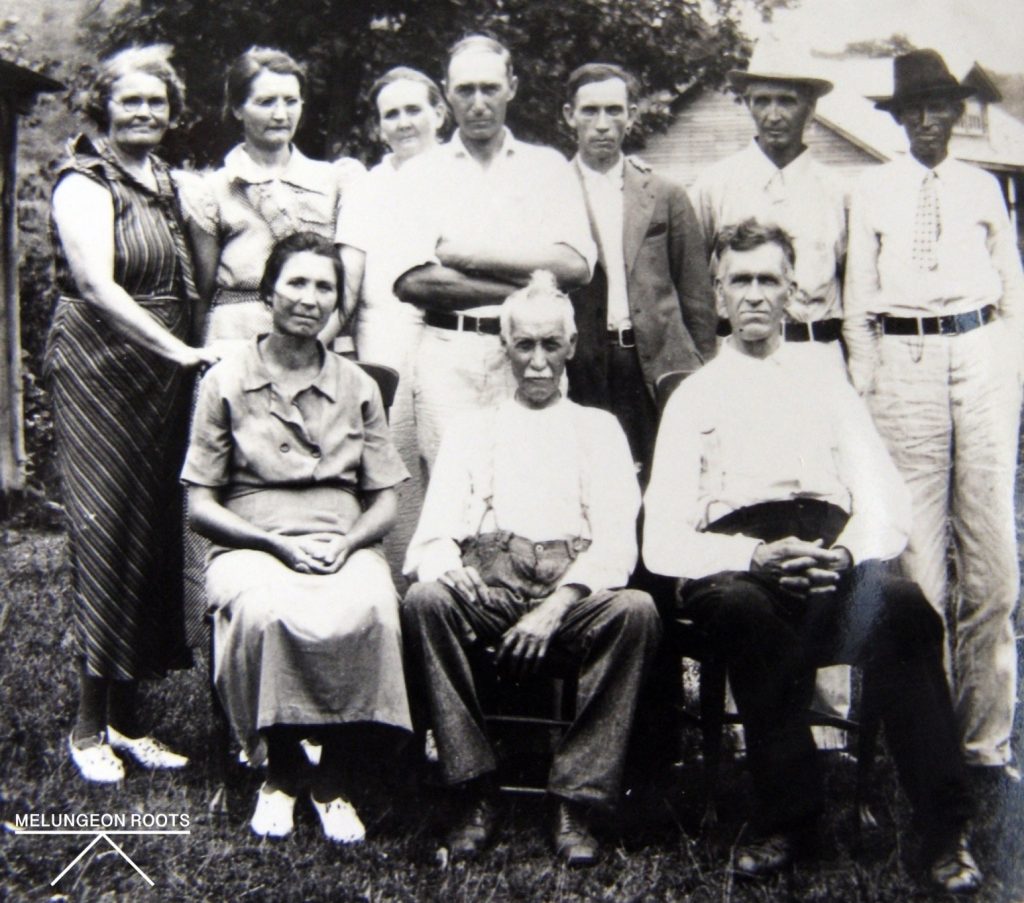
It can be a clue to Melungeon heritage if your family or ancestors have siblings with very different physical features. Some children may have dark eyes, skin, or hair, while their brothers and sisters may have fair skin and blue or green eyes. Melungeons didn’t fit easily into existing racial categories. Families often experienced that some lines became white-passing, while others were subject to ongoing discrimination, segregation, and persecution based on their darker appearance. I’ve seen sources describe Melungeons as having dark hair and dark or olive skin, with high cheekbones and pale blue eyes. While this does fit the description of some, there isn’t a specific look that is a giveaway for Melungeon ancestry.
Endogamy & Intermarriage
If you’re a Melungeon descendant, you may notice in your tree multiple instances of marriage between the same surnames (endogamy). This occurred because the Melungeons lived in relatively small, isolated communities. You may also see intermarriage between individuals of different ethnic groups. Often times, however, all members of a family were designated as the same race on census records, so this may not always be apparent.
Traits & Conditions
Melungeon descendants sometimes have traits (e.g. the Melungeon bump, hypermobility, shovel teeth) and diseases/disorders (e.g. Familial Mediterranean Fever, Sarcoidosis, Thalassemia) that are uncommon in Caucasian populations, but prevalent in other ethnic groups. While not every Melungeon descendant will have these traits and conditions, there appears to be a genetic predisposition to them within the population. Some of our family’s clues were a rare blood disorder, absence of wisdom teeth, and hypermobility. We have other less common traits/conditions as well that could be clues, such as twin births, flat feet, double crown, supernumerary teeth, and being nonallergic to Poison Ivy. We sit in “the Melungeon squat” by default (I haven’t looked much into this one, but have seen it mentioned several times and personally believe there could be a link).
As you can see, a significant amount of research (genealogical, historical, and possibly genetic) is sometimes necessary to determine Melungeon ancestry.
The Melungeon people were a multi-ethnic and multi-cultural people. Early American history was a mixture of many cultures interconnecting in the “new world,” intersecting Europeans, Africans, Indigenous Peoples, and others. The Melungeon people and people of multi-ethnic ancestry are simply the product of this. The most likely theory is that they descended from these intersections that took place in Colonial America, specifically in Virginia, North Carolina, South Carolina, and Maryland. Many of our Melungeon ancestors then migrated into regions of Appalachia and even continued to migrate across the United States. Today, there are Melungeon descendants living all across the country.
While disrupting lives and even sometimes separating families, Walter Plecker’s injurious attempts at achieving racial purity failed in the end. Author Manuel Mira said it best:
“There is no such thing as a pure Melungeon, European, African, or any other race, nowadays; all Americans are made up of many races, not necessarily a melting pot, but a mosaic of cultures.”
We hope these clues will be a good starting point for you, and we look forward to hearing about your discoveries!
Further Thoughts
These days, more than ever, many of us ache for belonging. We feel disconnected from our cultural identities and long for reconnection. But where do we start? How do we get back? We must first begin the process of rediscovering who we are, who we were – which is not always the same as what history has told us. For Melungeon descendants whose families have been “White” for generations, we may have spent our lives equating our ancestors with only colonizers, many of us unaware that there is much, much more to our story.
As you find time, look a bit deeper. There are other clues to our ancestry that we can observe in our daily lives. Not just Melungeon descendants – anyone!
Some things to think on:
- What unique skills, abilities, or lifeways were passed down?
- What music does your body move to? How does it move?
- Do you feel the urge to be near specific places or landscapes?
- What sounds or languages seem familiar to your ears?
- Are there symbols or patterns you keep going back to?
- Recurring themes in your dreams? Memories that aren’t yours?
- Family stories you’ve discounted as legend that could be true?
Keep going with these! What else have you noticed that might be a clue?

